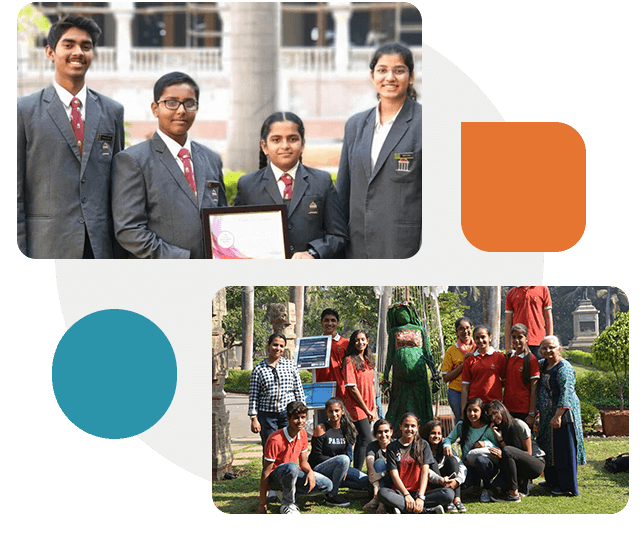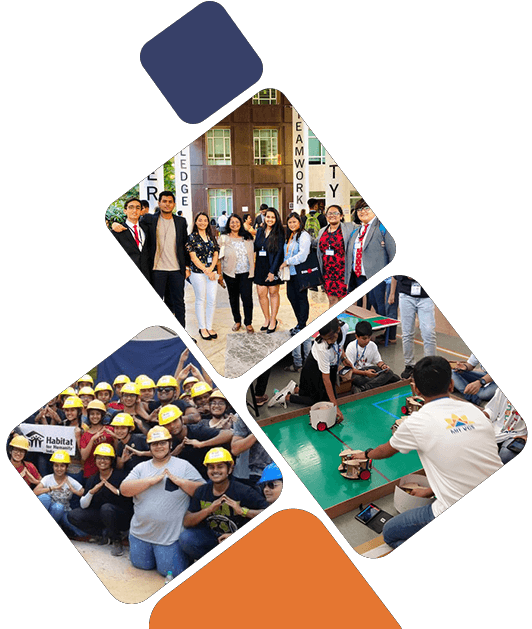Secondary Level Education In India: An overview
India's school system has made significant strides in recent years. India's education system is highly competitive, with public and private schools and highly competitive admission processes. In addition, most Indian schools focus primarily on academic subjects, with room for creativity or extracurricular activities.
Secondary level education in India is a critical part of a person's life, as it prepares them for the real world. It enhances a student's academic knowledge and skills and helps them develop their personality.
With a high degree of competition in Indian education due to plethora of choices available for the students, parents often tend to seek the top cbse schools in pune or best international schools in india or search for good icse syllabus schools near me.

Secondary education: What is its significance?
Secondary education is important for students because it helps them understand the world and develop the right perspective to thrive in it. It gives them the opportunity to explore different areas and learn about their interests. It also helps them determine what area they would like to pursue after graduation.
Secondary level education in India also helps students develop their personalities. Through extracurricular activities, secondary school faculty train students to enhance these essential traits. This helps them discover their hidden talents. They become more social and communicate better. In addition, they also learn how to be productive members of society.
A Secondary School Education's Benefits to Individuals and Society?
A secondary level education in India offers a range of benefits to individuals and society. It helps students develop capacities, contribute to their community, and prepare for higher education.
Ensures fewer child marriages
Education reduces the risk of child marriage by enabling girls to overcome discrimination. Girls with secondary education have more knowledge and confidence, which increases their power to make decisions. In developing countries, having all girls complete primary and secondary school would reduce the rate of child marriages by as much as 64 per cent.
Bringing down infant mortality
In a recent study, researchers found that higher levels of education are linked to lower infant mortality rates. In fact, infants born to mothers who are less educated are twice as likely to die than infants born to mothers who are well-educated. Education has tangible benefits, including a better understanding of the health care system, which helps improve the quality of life for both mother and child.
Equality and diversity are promoted in society
Education is an essential tool to promote equality and diversity. In addition to promoting social justice, education also promotes the rights of individuals. This right to equal opportunity is reflected in the distribution of jobs and educational opportunities. In most cases, positions are determined on the basis of merit, but the notion of adequacy can also be used to address this issue.
Efforts to reduce crime
In addition to reducing crime, education also helps communities improve their economy. Communities that invest in education have lower crime and drug rates, while those that do not invest in education are often plagued by violence. In fact, William Schweke, author of Smart Money: Education and Economic Development, says that "inadequate education today leads to a sub-optimal workforce tomorrow."
Stages Of School Education In India
A child's education can be divided into various stages. There is a primary school, middle school, and secondary school. Each of these stages teaches the child various concepts and skills. The goal of education is to prepare the child for the future.
Pre Primary Education
Pre primary education in India begins at three and continues to age six. It is delivered by kindergartens, playschools, and private schools. Different states have different levels of enrollment. Pre-primary education in India focuses on the basic skills of speaking, writing, and thinking.
Primary Education
Primary education is an important aspect of a child's life. It opens doors to opportunities and reduces generational neediness. It also develops a sense of responsibility, self-reliance, and cooperation with others. The overall goal of primary education is to help children become productive citizens who can contribute positively to society. The basic objectives of primary education are to teach children basic skills in reading, writing, and arithmetic.
Middle School
In India, middle school is the intermediate level of education between primary education and secondary education. The students in this stage study a wide variety of subjects, including the traditional core subjects. The curriculum closely mirrors that of a high school, and students are assigned a separate teacher for each subject. The curriculum in a secondary school includes subjects in English, mathematics, social sciences, and local dialect.
Secondary School
Secondary education in India is two years long, spanning grades nine and ten. It is broken into two-year cycles. Students usually attend private or public schools. Each cycle ends with a public examination, which is used to determine entrance to the next cycle. The secondary school curriculum generally includes three languages, mathematics and science, as well as physical education classes.
Senior Secondary School/Higher Secondary School
Senior Secondary School/Higher Secondary School in the country is the next stage of education after primary school. These schools generally offer higher academic levels of study. There are a variety of streams and specializations offered. The selection process will depend on the student's preferences. In India, students may choose to study arts, commerce, or science.
Likewise for the IB schools the stages of education include:
IB PYP: Primary Years Program
IB MYP: Middle Years Program
IB DP: Diploma Program
School eligibility requirements for secondary and senior secondary schools
Eligibility for secondary schools
To be eligible for admission to a secondary school student must complete basic primary school education. They must pass all the primary school examinations in order to be promoted to secondary school education. The age limit of the students should ideally be between 14-16 years.
Eligibility for senior secondary schools
To be eligible for senior secondary education, the student must have completed 9 and 10 grades. The age limit of the students should ideally be between 16-18 years.
Critical Thinking Skills
Critical thinking skills are essential to the academic success of secondary and senior secondary students. Critical thinking skills are directly related to problem-solving and decision-making. When students use critical thinking skills, they are able to assess the accuracy of the information and think critically about the justification of their beliefs and assumptions.
Research Skills
One way to develop research skills in students is to give them more responsibility. As part of their secondary education, students are expected to carry out project work. Using an integrated approach, the Indian curriculum introduces project work in subjects such as history or science.
Communication Skills
Communication skills are a crucial part of any student's academic success. They are also necessary for their future careers. The first step is to create an environment in which students feel comfortable sharing their opinions. This will help the students to develop their skills more naturally.
Leadership Skills
Students pursuing secondary education should know what they want to accomplish and how to achieve that goal. In addition, they must identify supports they may need to successfully transition into a post-secondary environment. Students also should have a solid understanding of the world of work and be able to plan for life after secondary school.
Skillset Required For Secondary & Senior Secondary Education
Secondary education is a challenging and rewarding time, but there are some skills that you will need to develop if you want to succeed. Those skills can help you make the transition from primary to secondary school, as well as prepare you for life after secondary education.
Conclusion
Secondary education is important in the modern world. Today's world is full of new technologies, ideas, and job opportunities. Secondary education will allow students to explore these opportunities and discover new abilities. Secondary education will enable students to determine their careers and help the nation develop overall.








